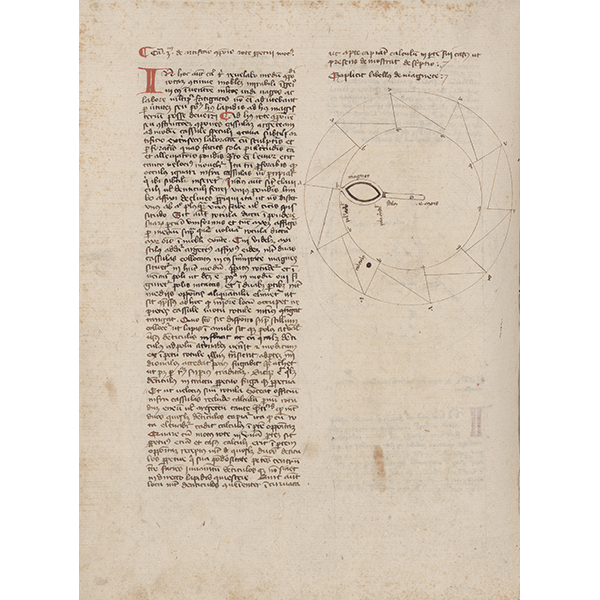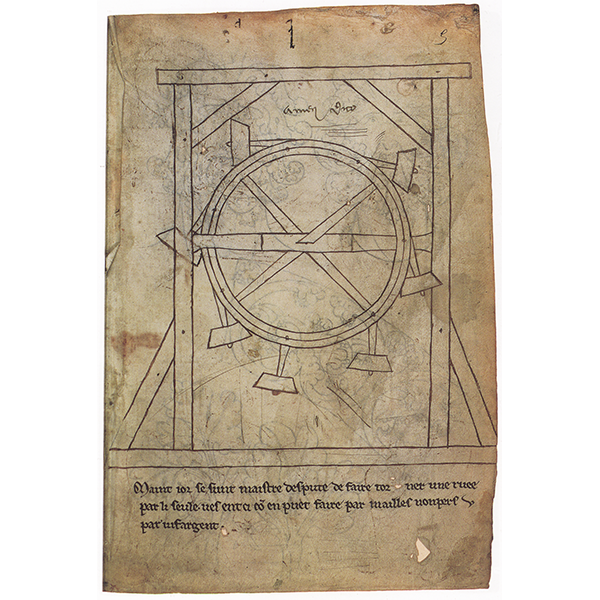Perpetual motion in the Middle Ages
The oldest European reference to a perpetual-motion machine is a drawing of an overbalanced wheel—clearly influenced by Arab models—in the notebook of Villard de Honnecourt, a 13th-century architect from Picardy. Another document shares the same geographic provenance: in his study on the lodestone, the 13th-century scientist Pierre de Maricourt presents a curious perpetual wheel powered by “magnetic induction.” Medieval evidence is generally scarce, because artisans and engineers did not communicate their knowledge in written form. However, we may reasonably assume that discussions of perpetual motion were common by the mid-14th century, as can be deduced from the works of these two authors, who refer to a debate between master-craftsmen and artisans that had been going on for some time.
Vatican City, Biblioteca Apostolica Vaticana, Ms. Vat. Lat. 4082, f. 195v
Paris, Bibliothèque nationale de France, Ms. Fr 19093, f. 5r



